Learn how to make healthy Teff Idli with beetroot leaves at home. This recipe needs no rice but Teff grains that are ancient and gluten-free. Serve these innovative South Indian-style steamed cakes for breakfast or snacks!
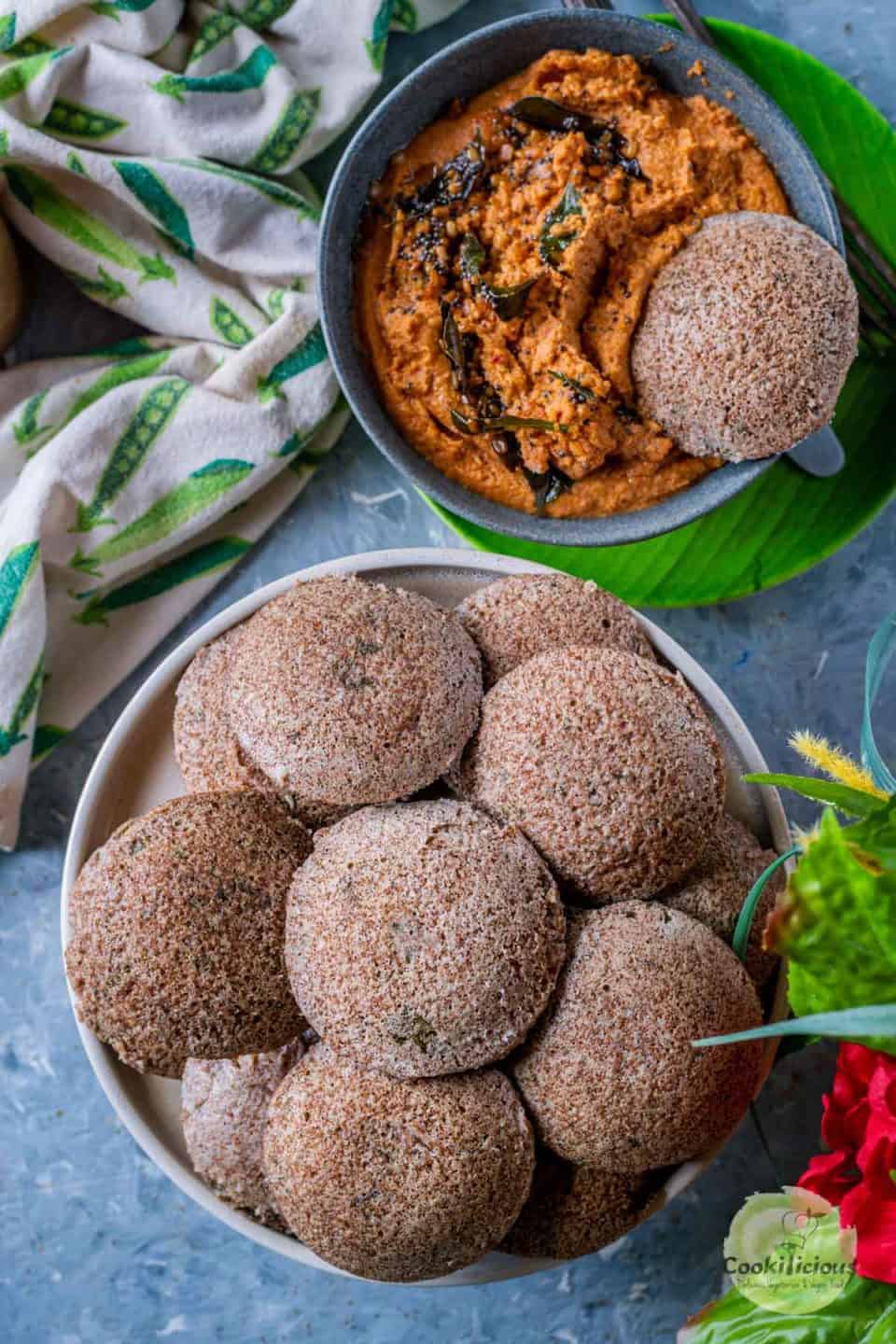
Jump to:
For the love of Idli
There's a popular saying that goes something like this - " Give an Idli to a South Indian, and they will be your friend for life!" OK, no one says that but me, but that's because I love Idlis and can eat them every day for every meal!
In case you are wondering what an Idli is then let me enlighten you. Idlis are steamed cakes that are prepared with fermented batter. The batter is made using rice and lentils. It's very healthy and nutritious and very easy to digest. Over time, there have been many variations to this South Indian delicacy and in fact, I have shared some too - Rava Oats Idli, and Ragi Kale Idli.
Teff Idli Recipe 🎥
Cooking with Beetroot leaves
Many are not aware that beetroot leaves are edible. Not just that, in fact, they are nutritious and taste great when cooked.
Similar looking to Swiss Chard, they are rich in iron (more than spinach), vitamins, and fiber. They also contain zero saturated fat and cholesterol which makes them an ideal ingredient when you are trying a lean diet. I add beetroot leaves to parathas, Dals, Sabudana Vada, salads, or anywhere I need to add greens. They work great!
Why make it
Idli is considered to be one of the safest foods a person can have, be it a toddler, child or adult. That's because the fermented batter helps with digestion and is soft to chew.
- No rice needed
- Teff (ancient grains) is a healthier and gluten-free option
- Steamed food is more nutritious
- It's vegan and low-fat
- Can be served for breakfast and/or snack
- Great way to use beet leaves in a recipe
Though these are idlis, they will not be as soft and spongy as the traditional white ones. But they taste good and are soft enough. Plus they are definitely healthier!
Ingredients needed 🧾
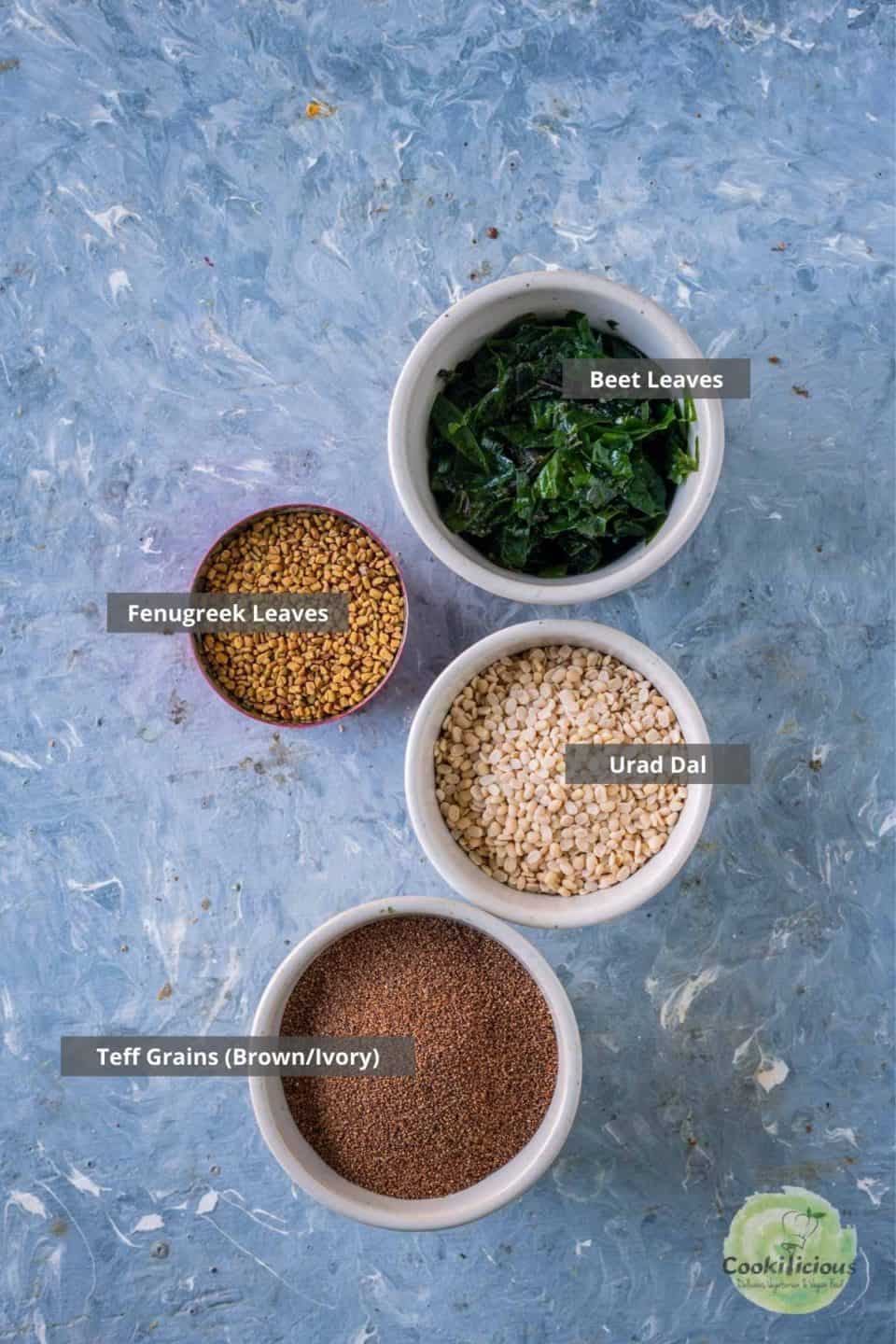
Want to save this recipe?
The traditional South Indian Idli is very easy to make! It requires just basic 2 to 3 ingredients. This recipe is no different. Plus all these ingredients can be found in grocery stores and on Amazon.
Teff grains - Can use either brown or ivory teff grains or mix them together.
Urad dal - split or whole urad dal can be used.
Fenugreek seeds - Also known as methi seeds are added to make the idlis soft. You can use ¼ cup of poha instead.
Salt - Rock salt is preferred.
Beet leaves - Adding beetroot leaves increases the nutritional value of these Idlis. You can add any other greens like spinach, baby kale,
How to make it
The recipe is very similar to making regular steamed Idlis. Watch the video above to see how to make them or follow the steps below.
- Soak rinsed Teff grains in a bowl.
- Soak rinsed urad dal in another bowl along with fenugreek seeds.
- Let it soak for 8 hours or leave it overnight.
- Drain the water from both bowls.
- Grind urad dal + fenugreek seeds with 2-3 tablespoons of water to make a smooth batter
- Add the teff grains and continue to grind to make a smooth batter
- Transfer it to a bowl. Mix it with your hands. (Body warmth aids the fermentation process)
- Place this bowl over a plate (to catch any overflow) and let the batter ferment for 8 hours or overnight in a warm corner of your kitchen, or in your oven
- After fermentation, the batter should have risen. Add salt and beet leaves to the fermented batter
- Give it a mix and teff idli batter is now ready
- Grease the idli plates of an Idli Cooker with oil and then pour a ladle full of batter into each mold
- Steam for 10 minutes. Let the idlis stand for a couple of minutes before opening and removing them from the mold
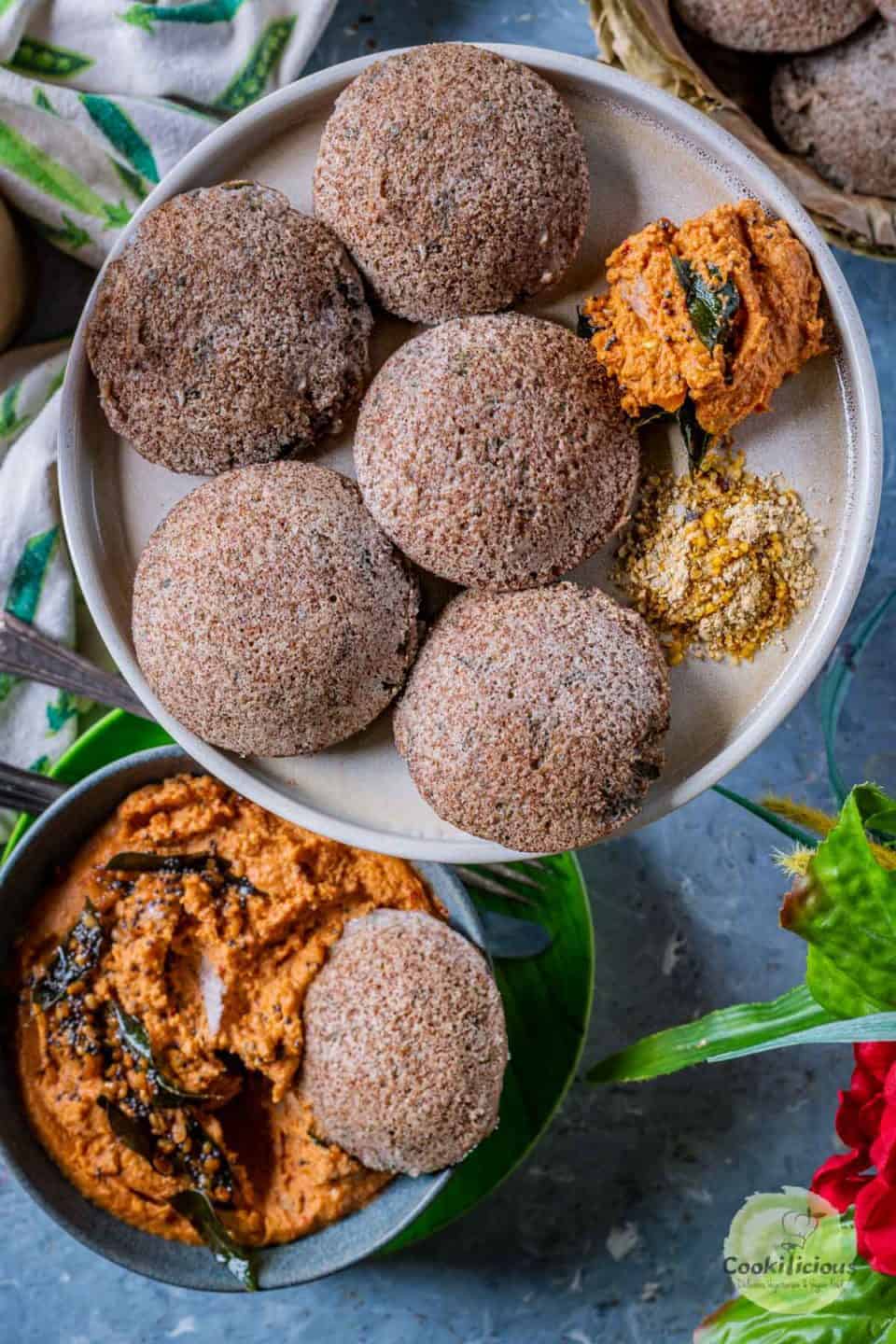
Serving suggestions 🍽
Teff Idlis are best served with Sambhar, chutney, and/or molagapodi. You can also use a mini Idli stand and make mini teff idlis similar to this. Alternatively, you can convert leftover Idlis to make Idli Upma or Idli Fry.
These idlis made with ancient gluten-free grains can be served for breakfast or a snack. We, in fact, love them so much that we have them for a light lunch or dinner. It's very easy on the stomach.
Top Recipe tips 💭
You can use whole or split urad dal in this recipe. You can adjust the quantity based on your need. Just remember that the ratio is always 2:1 of grains to lentils. Mixing the batter using your hands helps with the fermentation. Body heat works in our favor to get perfect soft idlis.
Placing a plate under the bowl helps prevent spills. When the batter ferments and rises, it can overflow. Instead of beetroot leaves, you can use any other varieties of green like spinach, kale, spring mix, or other veggies like cabbage, carrots, and green peas. If you don't have these ancient gluten-free teff grains, you can use quinoa or bulgur. The taste will differ though.
Recipe FAQs 📖
Methi or Fenugreek seeds are added to make soft Idlis. An alternate ingredient to fenugreek seeds is poha (flattened rice). Add ¼ cup of rinsed poha when grinding the urad dal.
If you live in a humid region, then the batter will easily ferment when left on the countertop.
But if you are living in a colder place, the best place is the oven. Place the batter in the turned-off oven with just the light on.
You can also ferment the batter in the Instant Pot. Place the steel insert in the Instant Pot and cover it with a glass lid.
Do not use the Instant Pot lid, as sometimes the batter can overflow and lock the lid. Set to Yogurt mode for 12 hours.
No problem, you can steam the idlis in many different ways. You can steam them in the Instant Pot, Microwave, or even a regular Pressure Cooker using silicone molds or steel cups.
They stay good for 3-4 days when stored in the fridge. They will get harder. Just reheat them in the microwave and serve.
This batter can also be used to make pancakes, dosa, or even waffles. In fact, you can also make paniyarams using an Appe Pan.
More steamed recipes
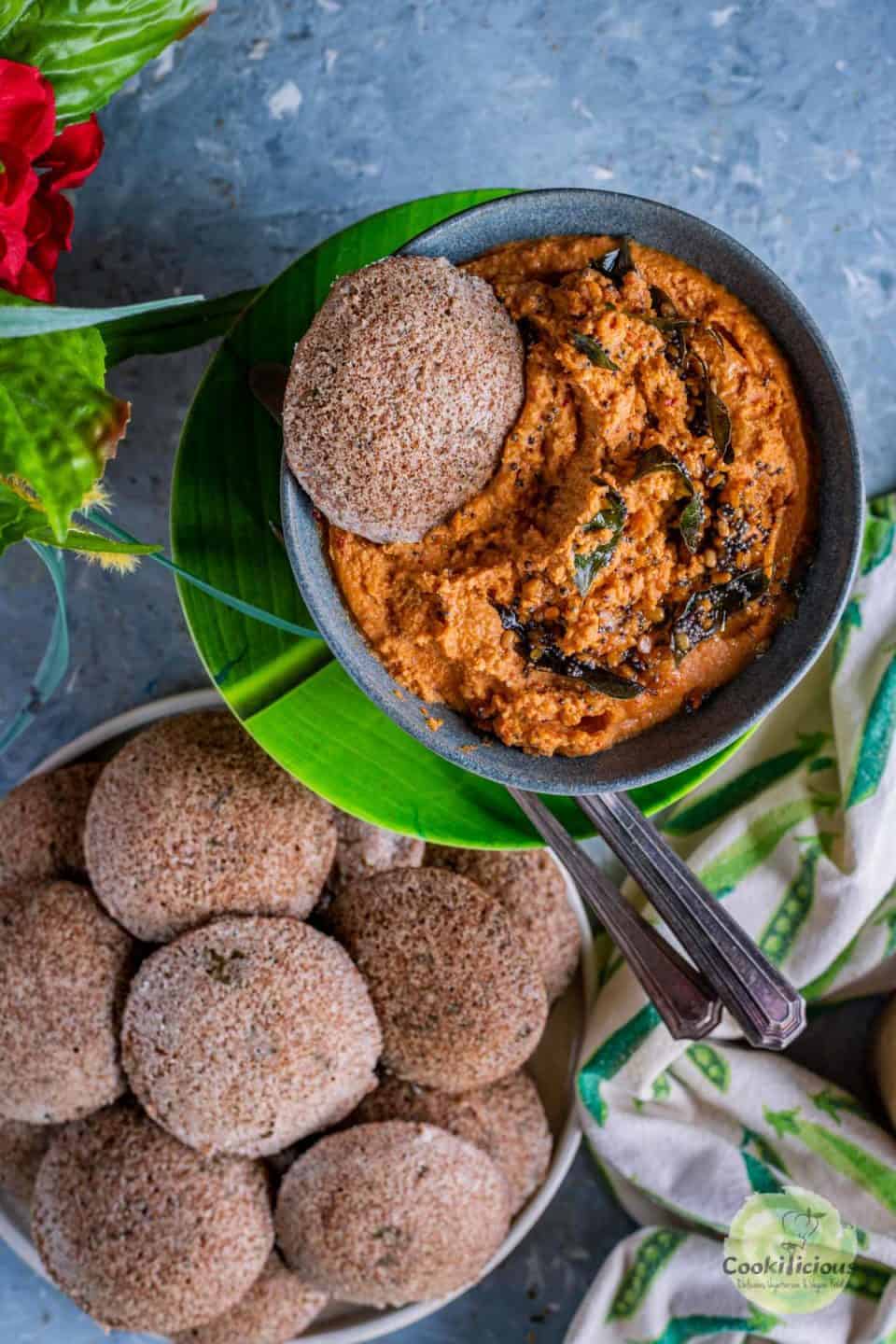
⭐️ Subscribe to the Cookilicious Newsletter and receive new recipes straight to your inbox! You'll receive my FREE Vegan Beginner's guide as a gift. Ready to elevate your cooking game? Purchase my Cookbook - The Essential Vegan Indian Cookbook today!
Recipe 📖
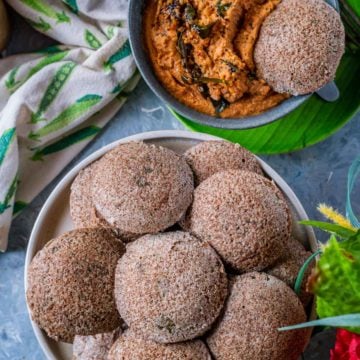
Teff Idli With Beet Leaves | No Rice Idli
Equipment
- Idli Cooker/Steamer
Ingredients
- 1 cup teff grains brown/ivory
- ½ cup urad dal
- ¼ teaspoon fenugreek seeds methi seeds
- ½ cup beet leaves
- sea salt
- water as needed
- cooking oil spray
Instructions
- Soak rinsed Teff grains in a bowl.
- Soak rinsed urad dal in another bowl along with fenugreek seeds.
- Let it soak for 8 hours or leave it overnight.
- Drain the water from both bowls.
- Grind urad dal + fenugreek seeds with 2-3 tablespoons of water to make a smooth batter
- Add the Teff grains and continue to grind to make a smooth batter
- Transfer it to a bowl. Mix it with your hands. (Body warmth aids the fermentation process)
- Place this bowl over a plate (to catch any overflow) and let the batter ferment for 8 hours or overnight in a warm corner of your kitchen, or in your oven
- After fermentation, the batter should have risen. Add salt and beet leaves to the fermented batter
- Give it a mix and teff idli batter is now ready
- Grease the idli plates of an Idli Cooker with oil and then pour a ladle full of batter into each mold
- Steam for 10 minutes. Let the idlis stand for a couple of minutes before opening and removing them from the mold
- Teff Idlis are best served with Sambhar, chutney, and/or molagapodi.

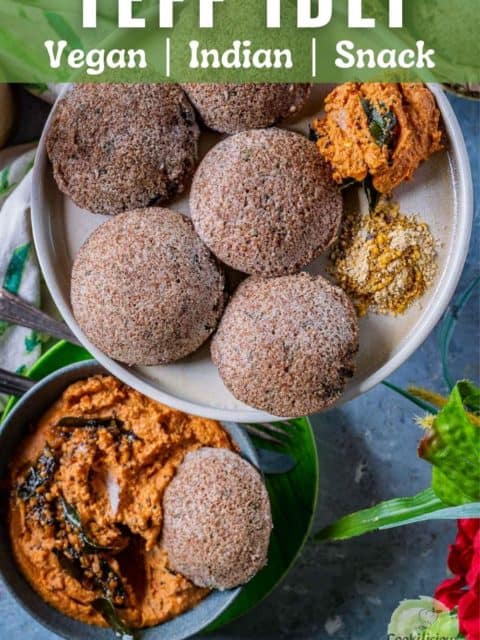
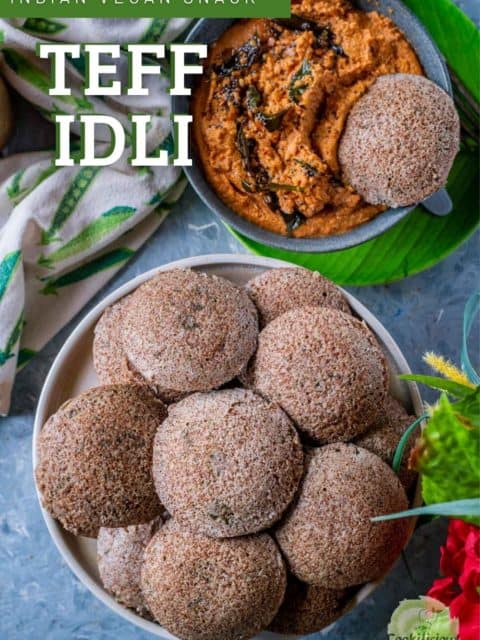
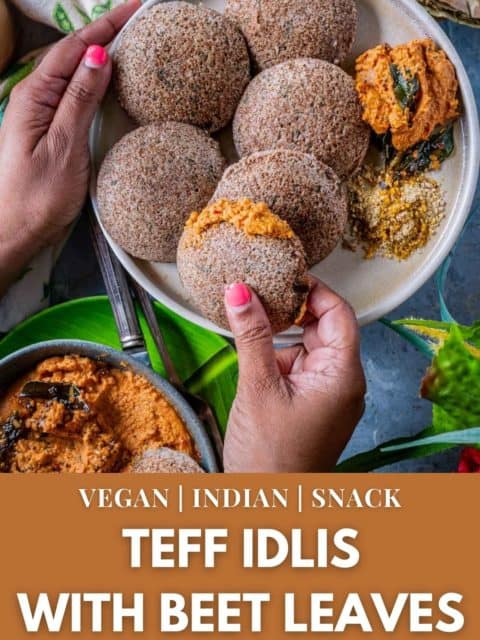
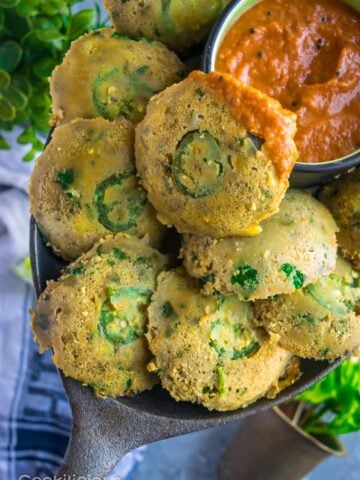

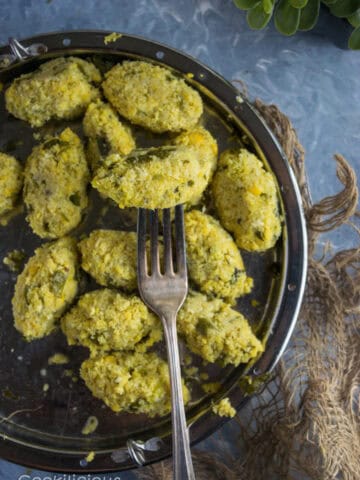
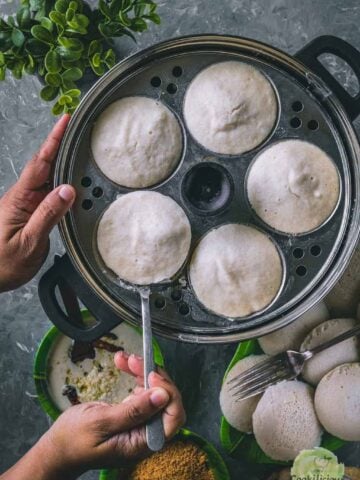
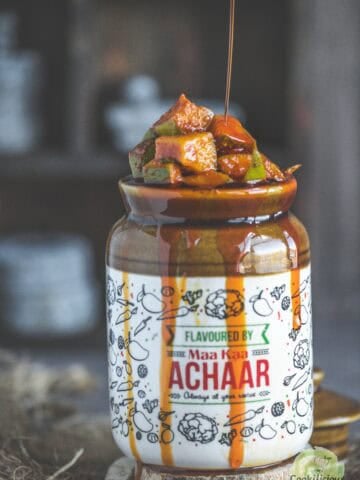
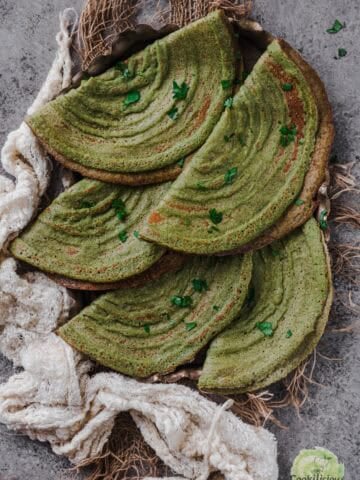
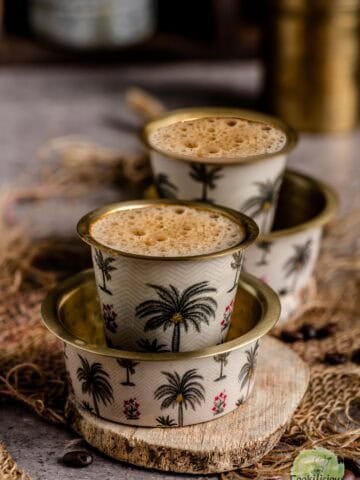
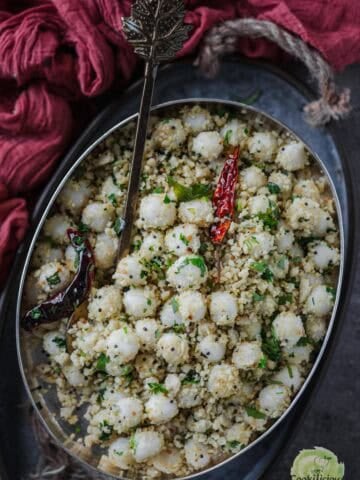
Leave a Reply